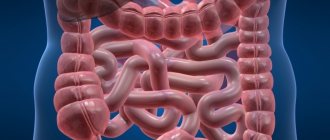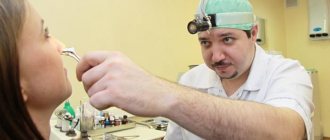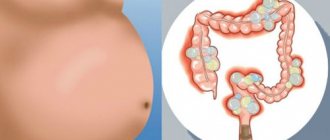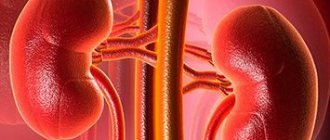Pain in temples
The temporal region is defined as the part of the head that is located between the frontal region and the ear. The skin here is thin, underneath it hides two auricular and temporal muscles, the ear, the temporal vein and artery, lymphatic vessels, and the carotid artery. She is also rich in nerves. Here passes the auricular and zygomaticotemporal, branches and node of the trigeminal, processes of the glossopharyngeal and vagus. From the inside, the temporal zone of the brain approaches the bone tissue.
Headache in the temples occurs due to the fact that during inflammation and damage, receptors that are located in the subcutaneous and muscle tissue, blood vessels, periosteum, eyes, and sinuses are irritated. There are no nerve endings in bones.
Which doctor should I contact?
You need to see a neurologist. Very often people do not go to the doctor for fear of finding something serious. Living in ignorance is somehow calmer. This is an extremely dangerous position in life. You can lose time, which in some diseases is a decisive factor in the recovery of the body.
Another common reason why we don't want to go to the doctor is lack of time or money. This also cannot serve as an excuse. Especially when it comes to severe and frequent temporal headaches. The sooner you are examined by a neurologist, the less likely there are complications and the faster the treatment process will go.
Author of the article:
Mochalov Pavel Alexandrovich |
Doctor of Medical Sciences therapist Education: Moscow Medical Institute named after. I. M. Sechenov, specialty - “General Medicine” in 1991, in 1993 “Occupational diseases”, in 1996 “Therapy”. Our authors
Causes
There are many reasons why temple pain occurs. They can be external and internal. External causes include those, having eliminated which, a person returns to a normal state. They are not associated with organic lesions, and if they lead to them, it is only after prolonged exposure.
- Intoxication. Pain occurs due to poisoning by toxic substances contained in toys, finishing materials, and products. A strong odor causes pressing pain in the temple, it spreads to the forehead and back of the head, intensifying due to irritation of the eyes, tissues of the larynx, and nose. A long stay near a source of toxic substances leads to constant pain, a feeling of swelling in the head, and dysfunction of the respiratory system and heart.
- Changing environmental conditions. When traveling to places with a different climate, in high mountains, or during long flights, temporal pain appears, which disappears soon after returning home. They are often observed in people prone to vegetative-vascular dystonia or vascular pathologies.
- Starvation. Provokes pain in the temporal region, weakness, refusal of certain foods or food entirely.
- Overwork. Pressure in the temples appears as a result of excessive fatigue, severe mental stress, and sleep disturbances. In addition to the temple, pain often affects the eye area. Fatigue is indicated by swelling, circles under the eyes, absent-mindedness, and nervousness.
- Food. Chips, spices, chocolate, smoked meats, and foods high in monosodium glutamate provoke the development of painful sensations. At the same time, spasm of the facial muscles may occur.
The list of internal reasons is more impressive. These are mainly diseases related to the brain.
Migraine
The disease is neurological in nature and is considered primary. It occurs independently, and not against the background of any disease. Some researchers, however, associate it with damage to the trigeminal nerve. Soreness appears on one side and is described as pulsating.
It can be so strong that a person loses his ability to work, becomes very irritable, lethargic, and depressed. He does not tolerate loud sounds or bright lights and prefers to be in a dark room. You may become intolerant to certain smells.
The pain intensifies with movement, overwork, stress, eating disorders, and sleep. Often accompanied by nausea. The attack lasts several days.
Cluster pain
If migraine occurs more often in women, then cluster pain occurs more often in men. There are no anatomical or physiological prerequisites for it. Sometimes it is correlated with jet lag, smoking and excess weight. The name comes from the nature of the pain - it appears in series.
The number of short-term attacks can reach three per day. Moreover, they can occur for several months in a row. After which a long break is possible. The duration of one attack is from 15 to 60 minutes.
The pain is very strong and sometimes difficult to bear. The onset of the attack is associated with the fact that the ear is blocked on one side, for example, on the left. This is immediately followed by acute pain in the temple and behind the eye. It may spread to the forehead. Bursted blood vessels cause redness of the sclera. Tears appear. If there is pain in the left temple, the nose swells on this side, and difficulty breathing occurs. Blood rushes to the face, sweating increases.
Attacks are more likely to recur in autumn and spring. Severe pain can lead to a suicide attempt.
Tension pain
Soreness in the temples is caused by prolonged tension in the muscular tissue of the neck and head, caused by a monotonous posture. Another reason is stress. Pressing pain appears on both sides. The attack sometimes lasts six hours.
When muscles are strained day after day, the pain becomes chronic.
Arterial hypertension
With repeated increases in blood pressure to 140/90 or higher, arterial hypertension is diagnosed. Vasoconstriction occurs under the influence of adrenaline, due to blood clots and atherosclerotic plaques. Neoplasms and hematomas can compress them. Increased pain in the temples is provoked by strong emotions, climate change, stuffiness, noise, and overwork. At the same time, painful sensations appear in the back of the head, noise in the head, sleep disturbances, and spots before the eyes. The pain is characterized as if something is pressing on both sides of the temples.
Types of temporal pain
It rarely squeezes the temples with an aching and dull pain - more often patients describe the condition in the same way: pulsating, sharp, severe attacks, especially when pressed. The duration lasts from a few seconds to several days or even weeks, which makes it difficult to lead a normal lifestyle. The reasons for the onset of attacks do not affect the nature of the pain - they manifest themselves with the same intensity.
Pressure (squeezes, aches)
With high intracranial pressure, the attacks are very strong, accompanied by nausea and photophobia. The disease covers the entire surface of the head, and sometimes the eyes. There is a feeling that something is pressing, hitting or gouging. This type of pain occurs after a traumatic brain injury or birth injury.
Shooting (pulsating)
This disease causes migraine, but sometimes other diseases are the causes: glaucoma, otitis media, vascular problems, infectious diseases. The danger of shooting pain in the head is determined by its location, intensity and duration.
Strong
Severe headaches are caused by migraines, sinusitis when blood pressure drops sharply, infections and traumatic brain injuries. If the intensity of pain increases, this indicates deviations in the functioning of the body.
Frequent (constant)
Prolonged pain (second and third days) are symptoms of meningitis, diseases of the nervous system, tuberculosis, and parasitic diseases. Daily seizures indicate a brain tumor.
With nausea
If your head hurts due to infection, the illness is accompanied by fever and chills. When suffering from influenza and ARVI, the attacks are not severe and are localized in the frontotemporal part or near the eyes. There are symptoms of a cold: runny nose, weakness, cough, nausea. After taking antipyretics or as you recover, the pain decreases and goes away. If the cause is meningitis, the pain is sharp, throbbing, there is a temperature of 37.5 degrees or higher, and vomiting is also bothersome. In this case, hospitalization is indicated. In rare cases, the cause lies in other infectious diseases, when the nature of the pain is different, but is accompanied by neurological signs.
Diagnostics
Determining the cause of temporal pain occurs based on data from blood tests and instrumental examinations.
General analysis indicators allow you to see signs of inflammation, infectious diseases, and anemia. Biochemical data indicate signs of atherosclerosis, temporal arteritis, and kidney diseases causing arterial hypertension. A coagulogram allows you to detect features of the blood clotting process, which allows you to draw a conclusion about the risk of thrombosis and hemorrhage.
Instrumental diagnostic methods include:
- Radiography. It is carried out primarily to exclude inflammation in the sinuses, injuries, and neoplasms.
- MRI. The data obtained helps to see and evaluate brain structures, tissue density, the presence of tumors, necrosis, hematomas, thrombosis, and the condition of blood vessels. Can be performed on young children and pregnant women. Children are performed under anesthesia.
- CT scan. As a result of a layer-by-layer study, a flat or three-dimensional picture is obtained that allows one to detect inflammation, tumors, and hemorrhages. The study helps to see neoplasms, vascular patterns, features of the skull bones, brain membranes, injuries, hematomas.
- Angiography. This is a special type of radiography with the introduction of a contrast agent, which allows you to see the pattern of blood vessels, aneurysms, and expansions.
- Ultrasound of the head. Based on the results of the study, organic lesions are assessed, irregularities in shape, size of blood vessels, and individual areas of the brain are identified.
- Electroencephalography. Indicates the presence of signs of epilepsy.
- Spinal tap. The specialist takes a sample of cerebrospinal fluid, analyzes it for changes in composition, and assesses intracranial pressure.
- Blood pressure monitoring. To clarify the diagnosis of arterial hypertension or hypotension, daily blood pressure monitoring using a special sensor is indicated.
If you suspect an increase in intracranial pressure, consultation with an ophthalmologist is recommended. The simultaneous occurrence of pain in the joint and temple requires a visit to the dentist. Suspicion of arterial hypertension, adrenal pheochromacytoma is an indication to visit a nephrologist.
Diet
It is important for a person who experiences regular headache discomfort to eat right.
First of all, he should exclude from his diet foods that contain monosodium glutamate.
What is this substance? Monosodium glutamate is a specific food additive that is present in processed foods.
In most cases, this additive is found in processed meats and sausages. Why is monosodium glutamate dangerous?
The fact is that this supplement increases the pain syndrome.
That is why patients suffering from painful ailments are not recommended to eat foods containing this additive.
If a person has eaten a product that contains monosodium glutamate, then after 15-20 minutes he will feel headache discomfort.
A strong pulsation may be felt in the temporal zone, and a dull aching pain in the forehead area.
In addition to monosodium glutamate, a person suffering from frequent headaches should avoid nitrites.
Nitrites are salts of nitrous acid, which, like food additives, provoke pain. What foods contain nitrites?
- Bolognese sausages.
- Canned ham.
- Fast food (eg hot dog).
- Smoked fish.
- Salami.
- Chocolate.
Patients suffering from migraines are contraindicated to eat chocolate. Why? The fact is that this product is one of the most powerful migraine triggers, as it contains caffeine.
First aid
To ease pain in the temples, it is recommended to lie down in peace and quiet, preferably in a room where bright sunlight does not penetrate. You can give yourself a massage in the area of the temporal fossa. It is enough to press your fingers on the right one, if there is pain in the right temple, for 10 seconds or perform light circular movements. The same movements are performed on the other side. Chamomile tea will help you calm down.
It is recommended to first apply a cold compress to your temples, and after a few minutes a hot compress.
Preventive measures
To prevent the onset of pain attacks, follow preventive measures:
- get enough sleep - it is recommended to sleep at least 7 hours a day, the best option is 8 hours;
- Give your eyes and muscles rest if your work is sedentary or stressful. Don’t get carried away with the computer outside of work hours - it’s better to open a book;
- Drink herbal teas every day. Suitable from chamomile flowers;
- take a walk in the fresh air, ventilate the room - oxygen guarantees the good functioning of all body systems.
Visits: 12,434
Treatment
You can relieve a one-time headache by taking a painkiller, for example, Nurofen, Aspirin, Paracetamol. However, for persistent, intensifying pain, treatment should be prescribed by a doctor based on the diagnostic results.
Medicines, physiotherapy, traditional methods, and massage are used. In case of severe vascular pathologies and tumors, surgical intervention is performed.
Using aromatherapy at home can help. Lavender oil is rubbed into the temples and inhaled. It can be used to prepare baths.
Literature
- Cluster headache / Kozelkin A.A., Kuznetsov A.A., Medvedkova S.A., Neryanova Yu.N. // International thematic magazine Headache - 2009 - No. 7.
- Cluster headache: diagnosis and treatment / Kurushina O.V., Kolomyttseva S.A., Miroshnikova V.V., Barulin A.E. // Medicinal Bulletin – 2021 – T10, No. 1.
- Headache: a guide for doctors / Tabeeva G.R. – 2018.
- Robbins, Matthew S.; Starling, Amaal J.; Pringsheim, Tamara M.; Becker, Werner J.; Schwedt, Todd J. (2016). "Treatment of Cluster Headache: The American Headache Society Evidence-Based Guidelines." 56 (7): 1093–106. doi:10.1111/head.12866. PMID 27432623.
- Rizzoli, P; Mullally, W. J. (20 September 2017). "Headache". The American Journal of Medicine. 131(1):17–24. doi:10.1016/j.amjmed.2017.09.005. PMID 28939471.
How to cure this?
It also happens that you often have a headache (back of the head and temples). What to do with a very severe migraine? When prescription medications are needed, most doctors prescribe triptans, which are available as tablets, nasal sprays, or injections. Some of the most common such drugs are Sumatriptan (Imitrex), Zolmitriptan (Zomig) and Rizatriptan (Maxalt).
Triptans provide complete relief within two hours for 70% of patients. The effect is best achieved if treatment is started early. Some patients require a second dose within 12 to 24 hours. Because triptans can affect blood flow to the heart as well as blood vessels in the head, people with coronary artery disease or underlying risk factors for heart disease should not use them. Another contraindication is taking antidepressants.
Older migraine medications, including ergot extracts that contain barbiturates, are still used by some people. Others need to use anticancer drugs, stronger prescription painkillers, or even corticosteroids such as Dexamethasone.
Consult with your doctor to find the method that's best for you. Remember, however, that overuse of medications can lead to headaches returning and a vicious cycle of taking stronger medications. So if you need treatment more than two or three times a week, consider preventatives.
If you often have a headache (pain in your temples), what should you do? Some people can prevent migraines by simply avoiding their causes. Others benefit from quick treatment for occasional attacks. But people who suffer from frequent attacks should take preventative medications.
The most effective prescription drugs are beta blockers (such as Propranolol, Atenolol, and Metoprolol), some antidepressants (Amitriptyline), and antiseptics (Divalprox, Topiramate, and Gabapentin). "). Severe cases can be minimized by contacting a headache specialist.
How to get rid of this?
So, you have a headache (pain in your temples). What to do if this is caused by overvoltage? If you suffer from frequent such ailments, try to identify the causes so that you can avoid them. Don't overwork yourself or skip meals. Explore different relaxation techniques. Yoga is especially beneficial because it can relax both your mind and neck muscles.
If you need more help, your doctor may prescribe stronger pain medication or physical therapy. Many people with recurring tension headaches can prevent attacks by taking a tricyclic antidepressant. Fortunately, simple methods help most sufferers of this disease.
High blood pressure
Except in cases of very high blood pressure, hypertension does not cause headaches. In fact, most people with this problem have no symptoms at all. Moreover, some studies report that hypertension is associated with a reduction in headaches. But this is not a reason to neglect measuring your blood pressure. So, if you have a headache and pounding in your temples, what should you do?
Hypertension leads to strokes, heart attacks, heart failure and kidney disease, so all people should check their blood pressure and then take steps to correct the problems.
When should you worry?
What to do if you have a headache in your temples? You can take care of yourself to minimize discomfort. But some headaches require urgent medical attention. Below are some warning signs when you should be concerned about your health. They include the following:
- constant headaches that develop after 50 years;
- a significant change in the pattern of your headaches;
- unusually severe pain;
- if it increases with coughing or movement;
- if it constantly intensifies;
- if it causes changes in behavior or cognitive function;
- headaches accompanied by fever, neck stiffness, confusion, decreased alertness or memory, or neurological symptoms (such as visual disturbances, slurred speech, weakness, numbness, or seizures);
- discomfort accompanied by painful redness of the eyes;
- sensations that arose after the blow;
- pain that interferes with normal daily activities;
- that appear suddenly, especially if they wake you up at night;
- in patients with cancer or with a weakened immune system.











